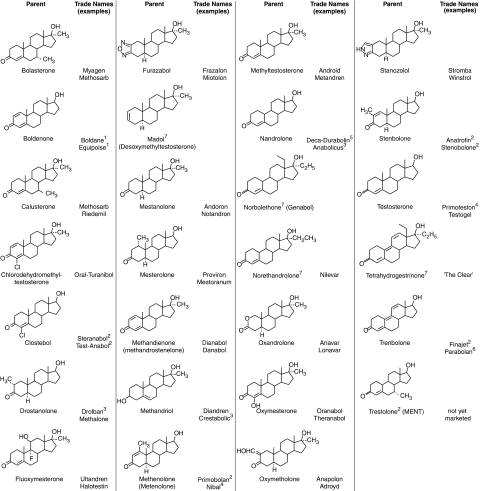How are synthetic steroids produced?
 Early Greeks unknowingly were using steroids to improve strength and endurance. They consumed whole lots of animal testicles to get that effect. However, it took humans much longer to discover anabolic steroids. By the end of the 19th-century lot was known about testosterone, its androgenic and anabolic properties.
Early Greeks unknowingly were using steroids to improve strength and endurance. They consumed whole lots of animal testicles to get that effect. However, it took humans much longer to discover anabolic steroids. By the end of the 19th-century lot was known about testosterone, its androgenic and anabolic properties.
The breakthrough came in the 1930s when steroid from testicles was isolated and named testosterone. However, steroids could not be mass produced without knowing everything about them. And soon its chemical structure was decoded, and people learned to mass produce it through artificial means.
Hormones generally have certain core elements in their chemical structure and other optional features that affect the duration, safety, and strength of that particular hormones. If the core structure is disturbed, the hormone will not work at all. Thus designer or newer synthetic analogs are created by preserving the core structure (steroid rings in case of anabolic) while experimenting with other structures attached to them. In that way, we can alter and improve specific properties of hormones in labs.
In case of steroid hormones all starts with cholesterol, yes the same cholesterol that doctors think cause heart disease. However, without cholesterol steroid hormones cannot be made.
Cholesterol comes either through food, however, if needed our body can also produce it. Thus cholesterol (a kind of fat) either comes with diet or made from acetate. Cholesterol with the help of enzymes is converted into Pregnenolone, a father of all steroidal hormones.
Figure 1 Pregnenolone - father of all hormones

Yes, Pregnenolone is called the father of all steroids, as it forms the base substance. It can be further modified with the help of various enzymes to just create any type of steroidal hormone, male hormones, female hormones, corticosteroids, and so on.
Steroids are named so as they all have four carbon rings in them (as in pregnenolone) but with the addition of some other components with the help of enzymes. Below one can see the various steroids, and as you notice they have one thing in common, all have those carbon rings. Difference between various steroids is not big, but the only addition of a few other chemicals components with the help of enzymes change their properties.
Figure 2 Chemical structure of various steroids

By making these smaller changes or tweaks, manufacturers ensure that steroids have less androgenic activity (masculine symptoms providing property), and more of anabolic activity. This way they are also able to reduce its conversion to estrogens, reduce toxicity (primarily hepatic).
Manufacturers use three strategies to create synthetic anabolic or even designer anabolic steroids. Strategy one is alkylation, a process that helps to create steroids that can be taken orally, as such compounds are chemically stable they cannot be digested or destroyed by the liver (during the first pass). The second way of modification is esterification which makes it possible to create injectable steroids that last for months in our body. Finally, the third strategy is to make minute changes to rings to alter the anabolic-to-androgenic ratios.
In short, manufacturing or synthesis of anabolic steroids is done in large scale now with the use of fats (cholesterol) as a base material. Further, enzymes are used to transform these lipids into various anabolic steroids.

